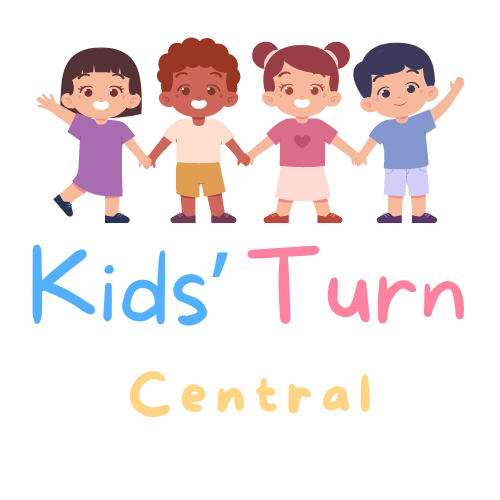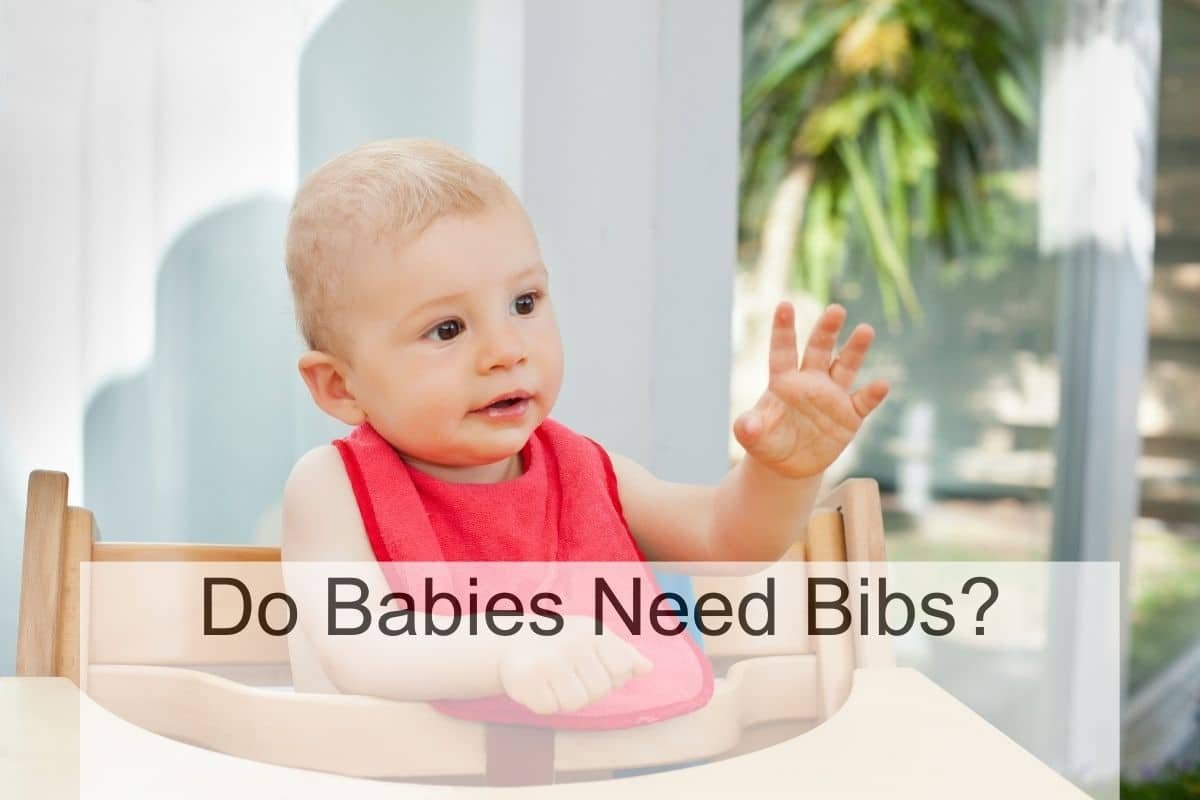Babies are adorable, but they can be messy little creatures. Feeding time is often the messiest, with food ending up everywhere except in their mouths. That’s where bibs come in handy. As a mother, I know firsthand how important bibs are for keeping my baby clean during mealtime. But do babies really need bibs?

The short answer is yes. Babies need bibs to keep their clothes clean and dry during feeding time. Whether you’re breastfeeding or bottle-feeding, there’s always a risk of milk or formula spilling onto your baby’s clothes. Bibs can also protect your baby’s skin from getting irritated by drool or spit-up. But when do babies need bibs, and what types of bibs are best? Let’s dive into the details.
Paragraphs should contain no more than 3 sentences.
Understanding Bibs

As a new parent, you may wonder if your baby really needs a bib. The answer is yes! Bibs are essential for keeping your baby clean and dry during feedings. In this section, I will explain the purpose of bibs and the different types of bibs available.
Purpose of Bibs
The main purpose of a bib is to protect your baby’s clothes from getting dirty during feedings. Babies can be messy eaters, and bibs can help prevent food and liquids from staining or soaking through their clothing. Bibs can also help keep your baby’s skin dry and free from irritation caused by drool or spit-up.
Types of Bibs
There are several types of bibs available, each with its own advantages and disadvantages. Cloth bibs are the most common type of bib and are made from soft, absorbent materials like cotton. They are easy to clean and can be reused multiple times. Plastic bibs are another option and are typically waterproof and easy to wipe clean. However, they can be uncomfortable for your baby to wear and may not be as absorbent as cloth bibs. Silicone bibs are a newer type of bib that are soft, flexible, and easy to clean. They are also waterproof and can catch food and liquids in a built-in pocket. However, they may not be as absorbent as cloth bibs.
When to Start Using Bibs

As a new parent, you might be wondering when to start using bibs for your baby. Here are some signs that your baby might need a bib:
Signs Your Baby Might Need a Bib
- Drooling excessively: If your baby is drooling a lot, especially during teething, a bib can help keep their clothes dry and prevent skin irritation.
- Spitting up frequently: Many babies spit up after feeding, and a bib can help protect their clothes from stains and odors.
- Starting solid foods: When your baby starts eating solid foods, a bib can help catch any food that misses their mouth and prevent stains on their clothes.
Age Recommendations
According to Ninio Baby, you can start using a bib when your baby is two weeks old. Newborns from 0-6 months usually need drool bibs to keep their clothes stained due to drool and milk. Babies older than six months need feeding time bibs that catch the food in the pocket sewn into the bottom of the bib.
It’s important to choose a bib that is appropriate for your baby’s age and needs. A bib that is too small or too large can be uncomfortable for your baby and may not provide the necessary protection. Look for bibs that are adjustable, easy to clean, and made from soft, absorbent materials.
Choosing the Right Bib

As a new parent, choosing the right bib for your baby can be a daunting task. With so many options available, it can be difficult to know where to start. Here are some important factors to consider when selecting a bib for your little one.
Material Considerations
When it comes to bibs, the material is an important consideration. Soft, breathable, and highly absorbent materials like cotton are great for everyday use, especially for younger babies. Organic cotton bibs are also a great option for parents who prefer natural materials. Other popular materials include polyester and silicone, which are durable and easy to clean.
Size and Fit
The size and fit of the bib are also important factors to consider. Look for bibs that are adjustable and can grow with your baby. Bandana bibs are a popular choice because they are stylish and can be adjusted to fit babies of all sizes. Make sure the bib covers your baby’s entire chest and reaches up to their chin to prevent food and drool from staining their clothes.
Ease of Cleaning
Babies are messy, so it’s important to choose a bib that is easy to clean. Look for bibs that are machine washable and can be dried in the dryer. Some bibs are also dishwasher safe, which can be a convenient option for busy parents.
Safety Features
Finally, safety is always a top priority when it comes to baby products. Look for bibs that are free of harmful chemicals and dyes. Bibs with adjustable snaps or velcro closures are also a safer option than bibs with ties, which can pose a choking hazard.
Using Bibs Effectively

As a new parent, I quickly learned that bibs are a must-have item for any baby. They help keep your little one’s clothes clean and dry during mealtime and prevent stains and messes. However, using bibs effectively can take some practice. Here are some tips that I found helpful:
Putting on a Bib
When putting on a bib, make sure it fits snugly around your baby’s neck without being too tight. You don’t want it to be too loose, as food can easily get under the bib and onto your baby’s clothes. Also, make sure the bib covers your baby’s entire chest area to prevent any spills from getting on their clothes.
Mealtime Strategies
During mealtime, make sure to use a bib that is appropriate for the type of food your baby is eating. For example, if your baby is eating something messy like spaghetti, use a bib with a plastic backing to prevent stains from seeping through. If your baby is eating something less messy, a cloth bib may be sufficient.
Another strategy is to use a bib with a pocket at the bottom to catch any food that falls. This can be especially helpful when your baby is learning to self-feed and tends to drop food on the floor.
On-the-Go Solutions
When you’re on the go, it’s important to have bibs that are easy to clean and transport. Look for bibs that are made of materials that are easy to wipe down, such as silicone or plastic. Also, make sure the bib is compact and can easily fit in your diaper bag.
In addition, consider using disposable bibs for when you’re out and about. These bibs are convenient and can be thrown away after use, making clean-up a breeze.
Caring for Bibs
As a new parent, you’ll quickly learn that bibs are a lifesaver when it comes to keeping your baby’s clothes clean. But, how do you take care of all those bibs? Here are some tips to help you keep your baby’s bibs in good condition.
Washing and Drying
When it comes to washing bibs, it’s important to read the care label first. Most bibs can be washed in the washing machine, but some may need to be hand-washed. I like to use a gentle detergent and wash bibs in warm water. Be sure to separate bibs from other clothes to avoid any color bleeding.
After washing, bibs can be air-dried or put in the dryer on a low heat setting. If you’re using the dryer, be sure to remove the bibs promptly to avoid any wrinkles.
Stain Removal Tips
Babies are messy, and bibs can get stained quickly. Here are some tips to help you remove stains from bibs:
- For food stains, try pre-treating the stain with a stain remover before washing.
- For spit-up or formula stains, soak the bib in cold water before washing.
- For stubborn stains, try using a mixture of baking soda and water to create a paste. Apply the paste to the stain and let it sit for a few hours before washing.
Storage and Organization
To keep your bibs organized, consider using a drawer or basket specifically for bibs. I like to fold my bibs and stack them neatly in a drawer. If you’re short on space, you can also hang bibs on a hook or over a hanger in your baby’s closet.
When storing bibs, be sure to check them periodically for any signs of wear and tear. Bibs with holes or frayed edges should be replaced to avoid any safety hazards.
Alternatives to Bibs
As a new parent, you may wonder if bibs are the only option for keeping your baby clean during feedings. While bibs are a popular choice, there are other alternatives that may work better for you and your baby.
Cloth Diapers and Towels
One alternative to bibs is to use cloth diapers or towels as a makeshift bib. Simply fold the cloth in half and place it over your baby’s chest, securing it with a safety pin or clip. This option is especially useful if you have a lot of cloth diapers or towels on hand and want to avoid buying additional bibs.
Smocks and Aprons
Another option is to use a smock or apron designed specifically for feeding. These products are often made of waterproof or stain-resistant materials and have sleeves to protect your baby’s clothes. Some smocks and aprons even come with a pocket to catch food and spills.
Disposable Options
If you prefer a disposable option, you can try using disposable bibs or even paper towels. Disposable bibs are convenient for on-the-go feedings and can be easily thrown away after use. Paper towels can also be used as a makeshift bib, although they may not be as absorbent as other options.

